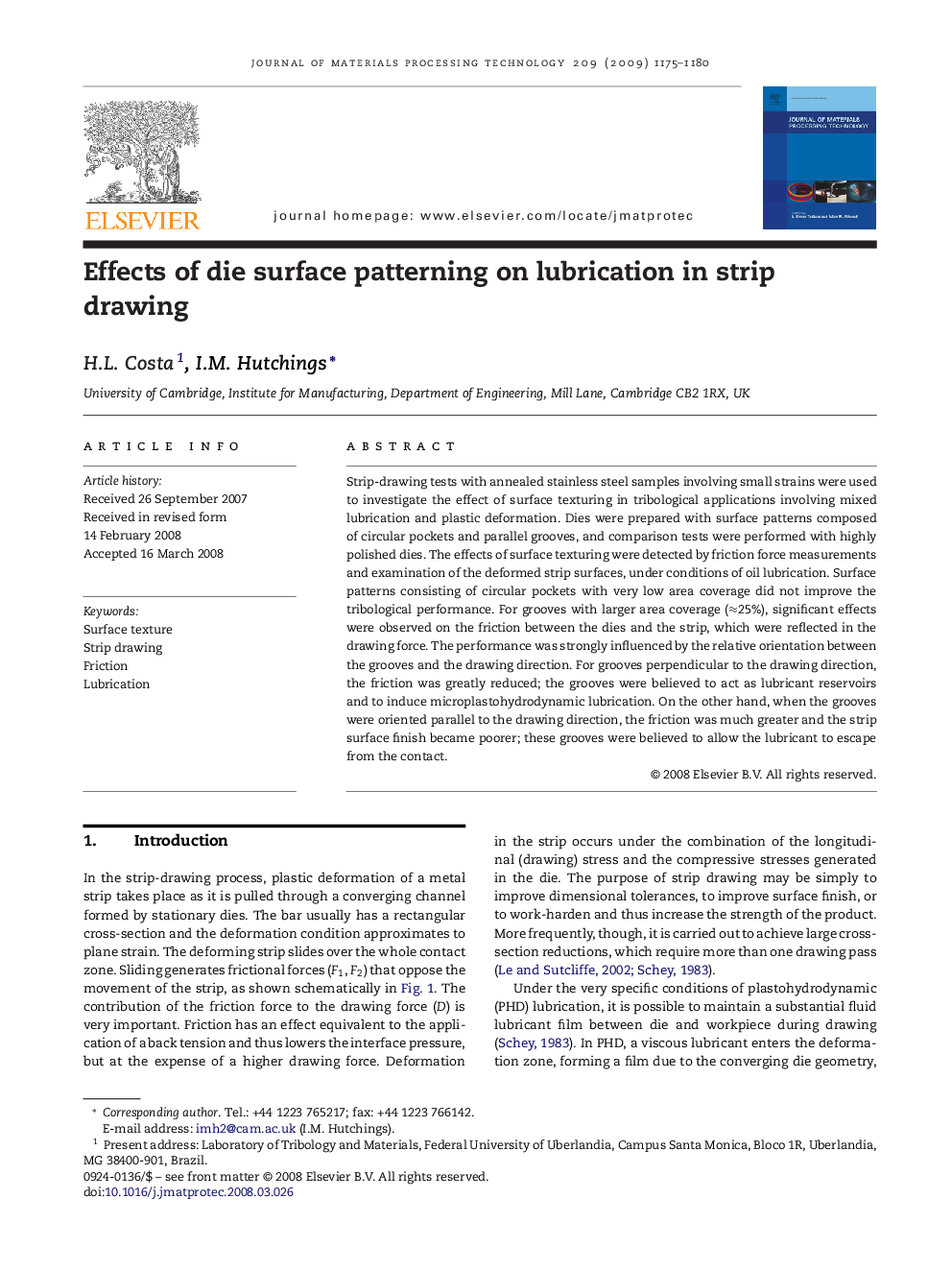| Article ID | Journal | Published Year | Pages | File Type |
|---|---|---|---|---|
| 791493 | Journal of Materials Processing Technology | 2009 | 6 Pages |
Strip-drawing tests with annealed stainless steel samples involving small strains were used to investigate the effect of surface texturing in tribological applications involving mixed lubrication and plastic deformation. Dies were prepared with surface patterns composed of circular pockets and parallel grooves, and comparison tests were performed with highly polished dies. The effects of surface texturing were detected by friction force measurements and examination of the deformed strip surfaces, under conditions of oil lubrication. Surface patterns consisting of circular pockets with very low area coverage did not improve the tribological performance. For grooves with larger area coverage (≈25%), significant effects were observed on the friction between the dies and the strip, which were reflected in the drawing force. The performance was strongly influenced by the relative orientation between the grooves and the drawing direction. For grooves perpendicular to the drawing direction, the friction was greatly reduced; the grooves were believed to act as lubricant reservoirs and to induce microplastohydrodynamic lubrication. On the other hand, when the grooves were oriented parallel to the drawing direction, the friction was much greater and the strip surface finish became poorer; these grooves were believed to allow the lubricant to escape from the contact.
